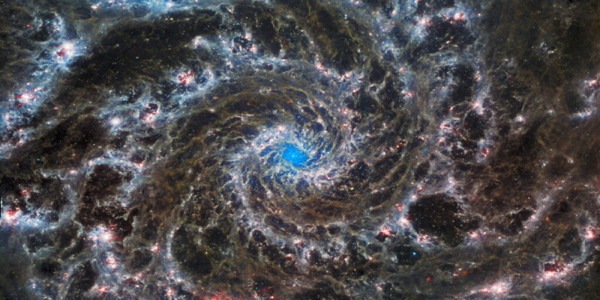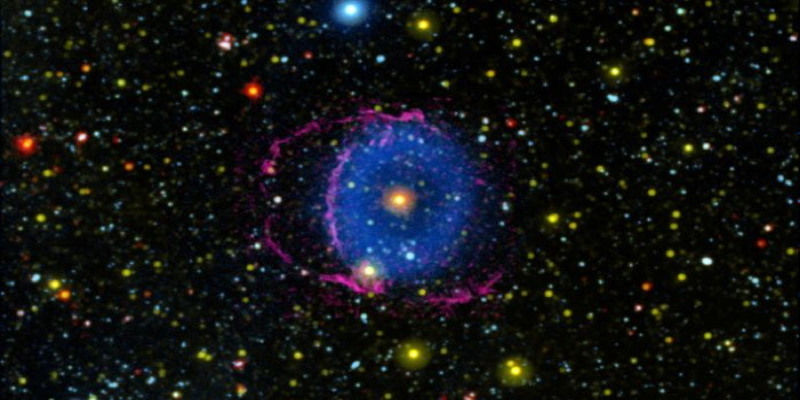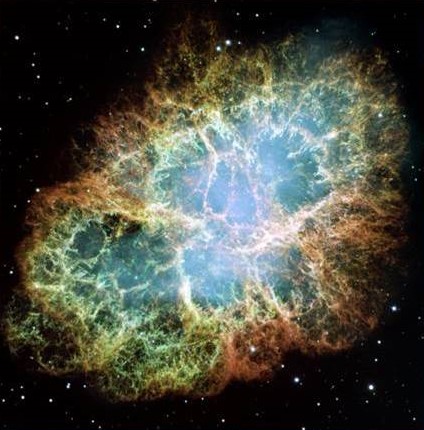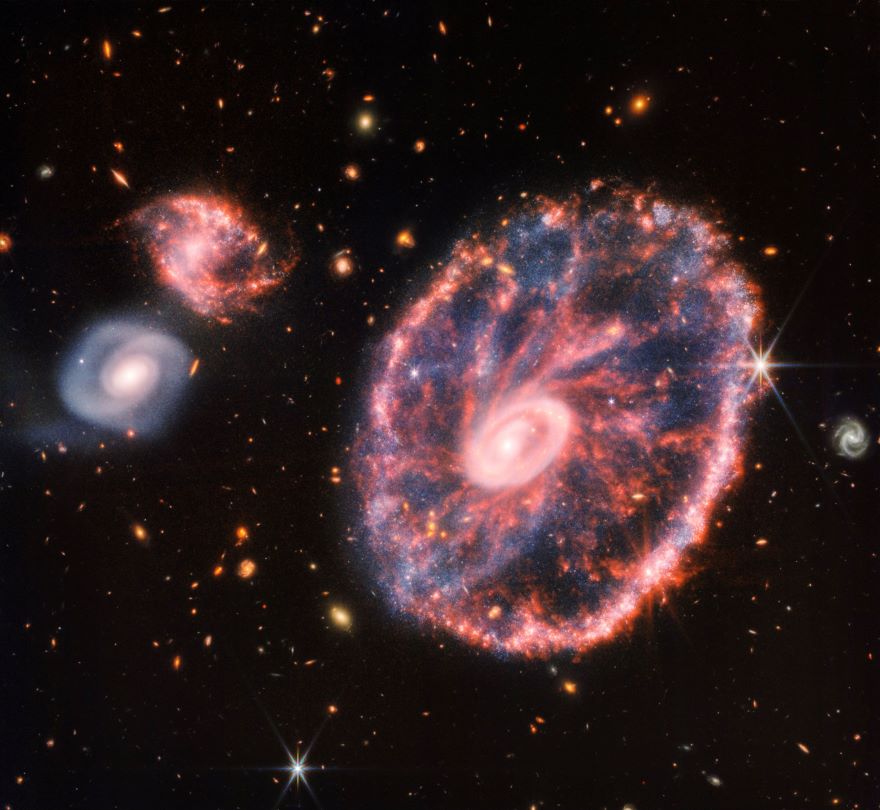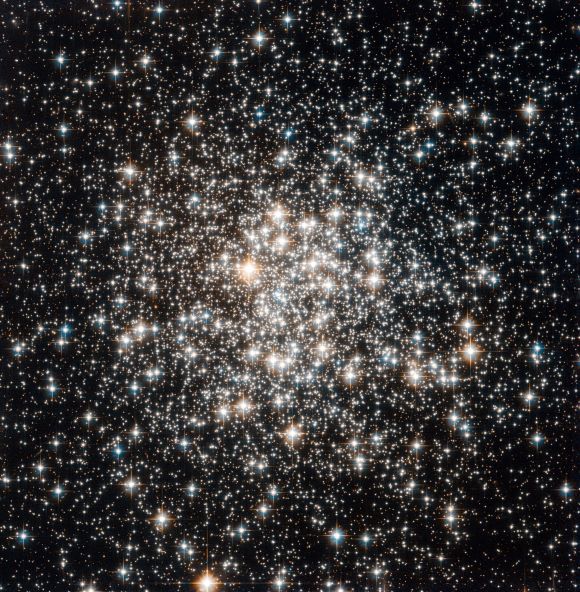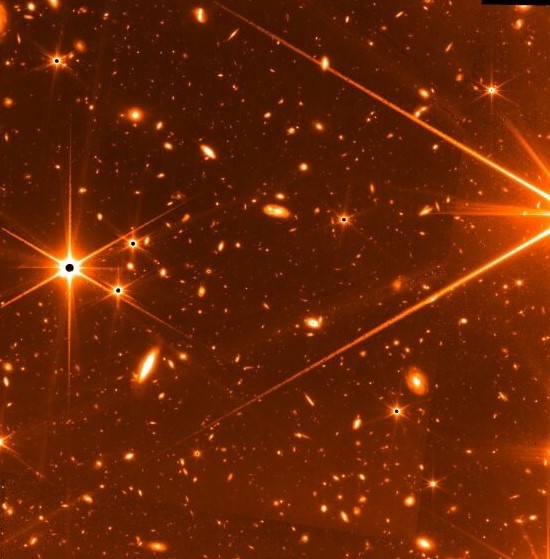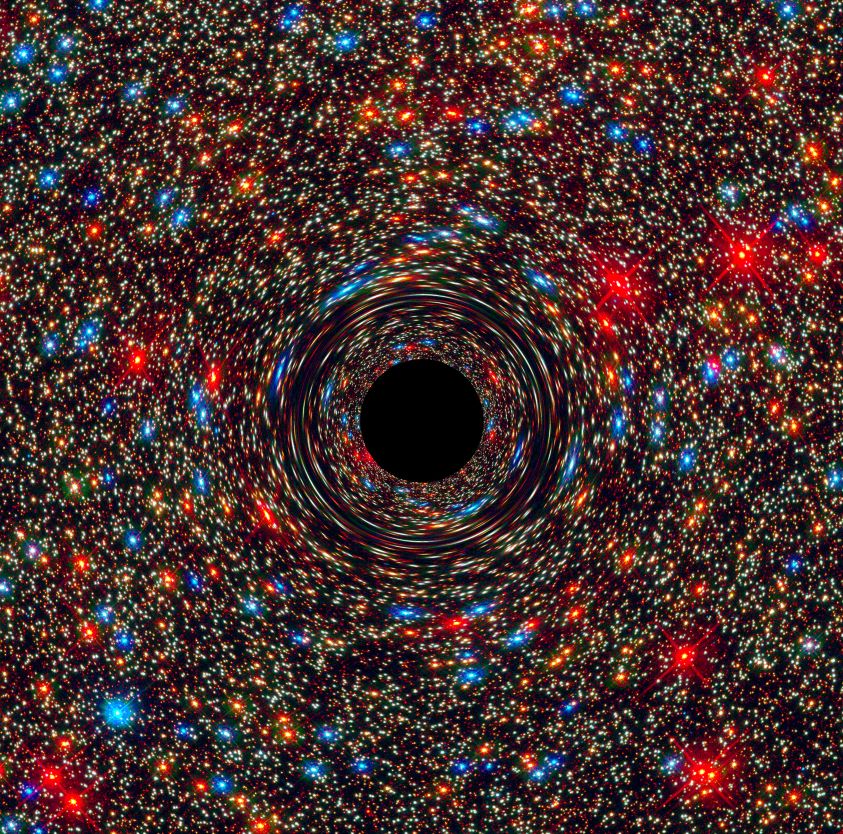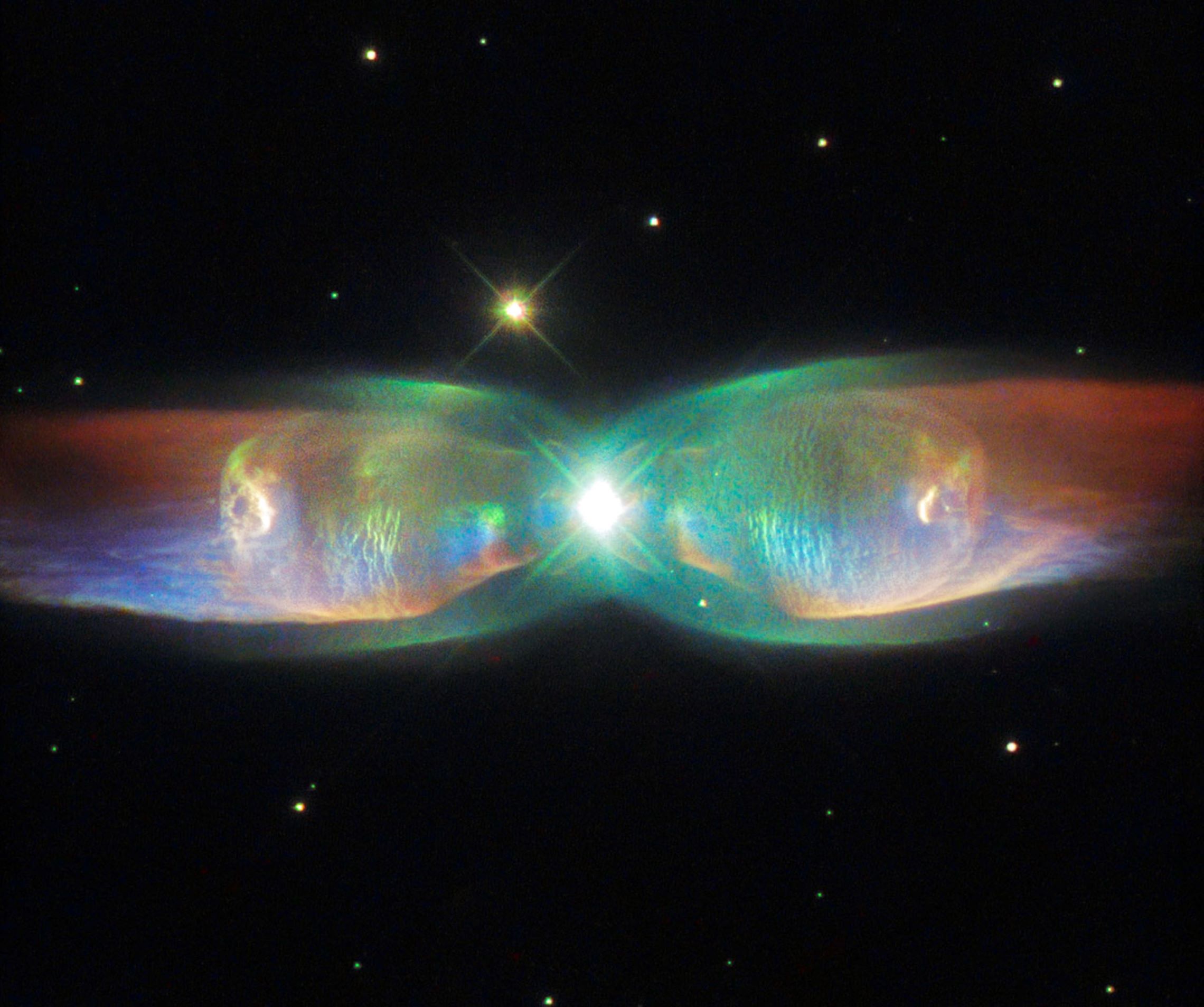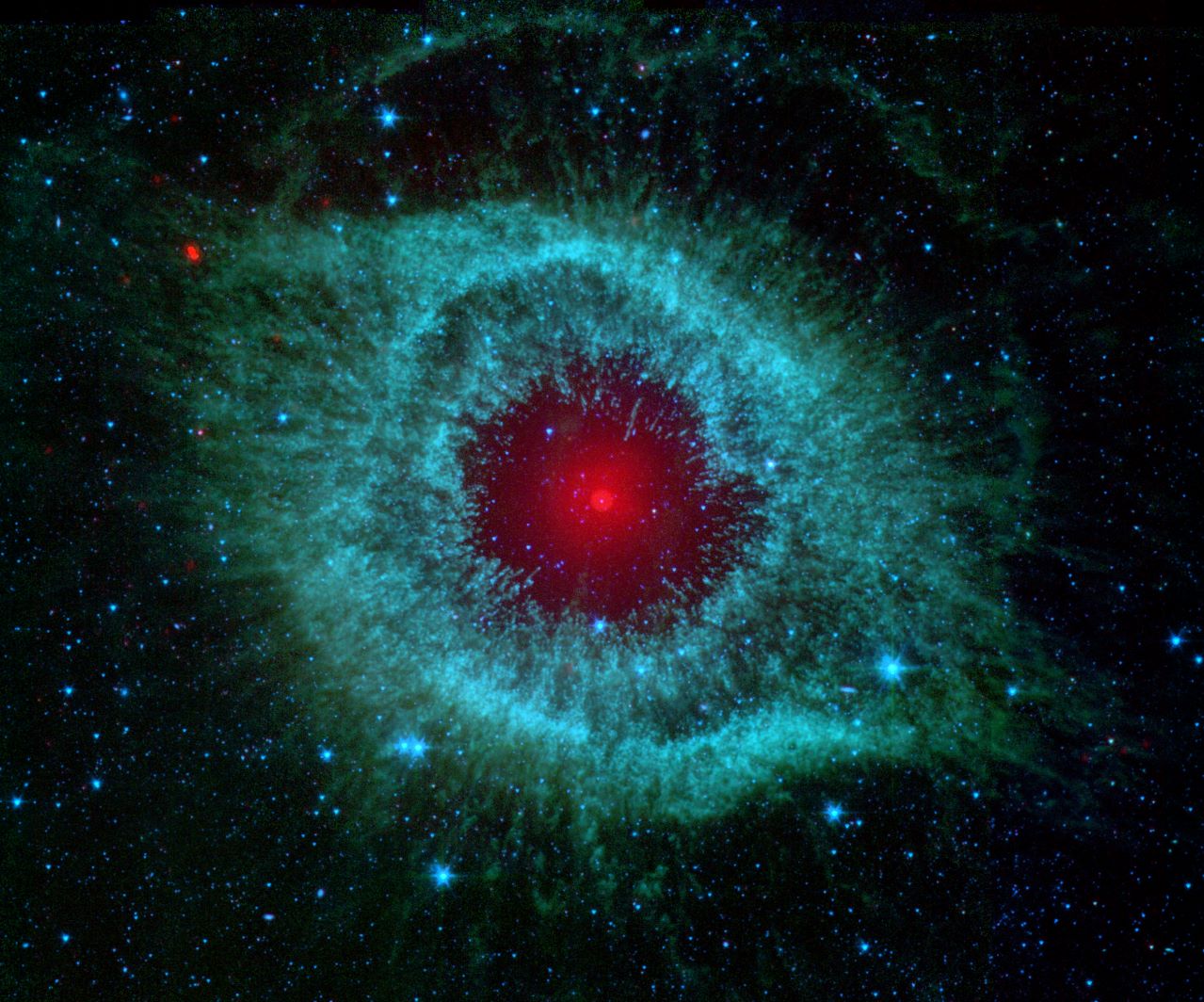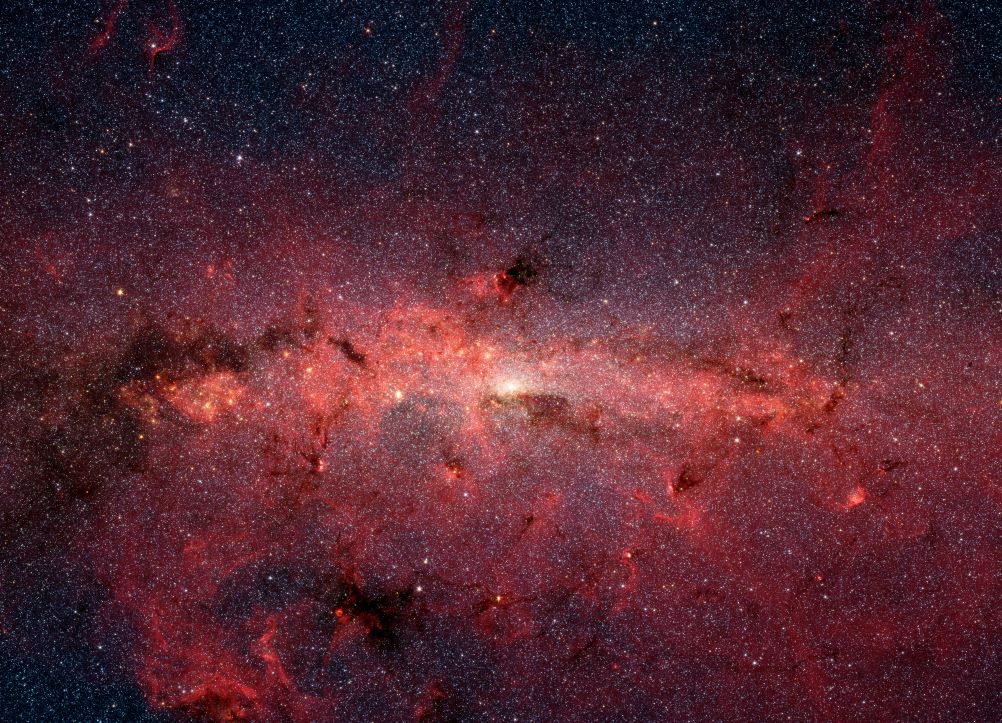NASA images from the Hubble and James Webb Telescope
The James Webb Space Telescope, launched in 2021 has given us an even deeper insight into the universe. In its first year of science operations, the J W S Telescope exceeded astronomers’ expectations and wowed the world with stunning imagery It is the largest, most powerful space telescope ever built, allowing scientists to look at what our universe was like about 200 million years after the Big Bang, capturing images of some of the first galaxies ever formed and observe objects in our solar system from Mars outwards, look inside dust clouds to see where new stars and planets are forming and examine the atmospheres of planets orbiting other stars.
We are thrilled to bring these NASA images to life in our illuminated frames. Each astonishing capture of worlds around us comes with a detailed description of our fascinating universe. These incredible unearthly creations look stunning wherever they are displayed. All images and text courtesy of NASA.
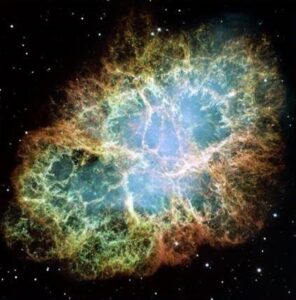 The Crab Nebula – Messier 1
The Crab Nebula – Messier 1
The Crab Nebula, 6,500 light years away, is an expanding remnant of a star’s supernova explosion. Recorded by Japanese and Chinese astronomers almost 1,000 years ago in 1054 AD, the glowing relic has been expanding since the star exploded, and it is now approximately 11 light-years in width.
This Hubble mosaic is one of the largest images ever taken of a supernova remnant by the space telescope. It is also the highest resolution image ever made of the entire Crab Nebula, which is located 6,500 light-years away. The composite was assembled from 24 individual exposures taken with Hubble’s Wide Field Planetary Camera 2 in October 1999, January 2000, and December 2000.
The orange filaments are the tattered remains of the star and consist mostly of hydrogen. The rapidly spinning neutron star embedded in the center of the nebula is the dynamo powering the nebula’s eerie interior bluish glow. The blue light comes from electrons whirling at nearly the speed of light around magnetic field lines from the neutron star, which is the crushed, ultra-dense core of the exploded star.
Like a lighthouse, the neutron star produces twin beams of radiation. From Earth, it appears to pulse 30 times a second due to the neutron star’s rotation sweeping the beams across our line of sight. It has the mass equivalent to the Sun crammed into a rapidly spinning ball of neutrons 12 miles across.
The nebula derived its name from its appearance in an 1844 drawing made by Irish astronomer Lord Rosse, who used a 36-inch telescope. When viewed by Hubble, as well as by large, ground-based telescopes, the Crab Nebula takes on a more detailed appearance that yields clues into the spectacular demise of the star.
In 2002, Emily Schaller and Robert Fesen of Dartmouth College used Hubble to examine the motion and shape of bright knots in the Crab Nebula. They found that the knots lie relatively close to the source of the ionizing radiation, which may lead to higher gas temperatures of the knots than expected. This limits our understanding of the structure of the nebula and what role magnetic fields may play as the material expands outward and eventually combines with other material to form new stars.
In 2010 and 2013, Allison Loll of Arizona State University used Hubble to determine several northwest-southeast (upper right to lower left) asymmetries in the nebula’s filaments, as well as the development of long “fingers” of gas and dust. She attributes these to the sideways motion of the neutron star in the northwest (upper right) direction. Jeff Hester, also at Arizona State University, studied Hubble observations of the Crab Nebula along with data from other observatories to investigate the expansion and magnetic fields of the nebula remnant from the explosion.
Constellation: Taurus Distance: 6,500 light-years (2.0 kiloparsecs) Instrument: Wide Field Planetary Camera 2 Image Filters: F502N ([O III]), F631N ([O I]), F673N ([S II]).
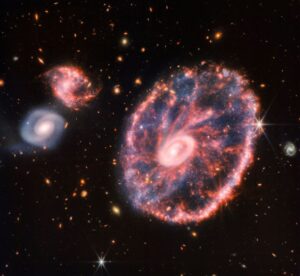 The Cartwheel Galaxy
The Cartwheel Galaxy
This galaxy formed as the result of a high-speed collision that occurred about 400 million years ago. The Cartwheel is composed of two rings, a bright inner ring and a colorful outer ring. Both rings expand outward from the center of the collision like shockwaves. NASA’s James Webb Space Telescope has peered into the chaos of the Cartwheel Galaxy, revealing new details about star formation and the galaxy’s central black hole. Webb’s powerful infrared gaze produced this detailed image of the Cartwheel and two smaller companion galaxies against a backdrop of many other galaxies. This image provides a new view of how the Cartwheel Galaxy has changed over billions of years.
The Cartwheel Galaxy, located about 500 million light-years away in the Sculptor constellation, is a rare sight. Its appearance, much like that of the wheel of a wagon, is the result of an intense event – a high-speed collision between a large spiral galaxy and a smaller galaxy not visible in this image. Collisions of galactic proportions cause a cascade of different, smaller events between the galaxies involved; the Cartwheel is no exception.
The collision most notably affected the galaxy’s shape and structure. The Cartwheel Galaxy sports two rings — a bright inner ring and a surrounding, colorful ring. These two rings expand outwards from the center of the collision, like ripples in a pond after a stone is tossed into it. Because of these distinctive features, astronomers call this a “ring galaxy,” a structure less common than spiral galaxies like our Milky Way.
The bright core contains a tremendous amount of hot dust with the brightest areas being the home to gigantic young star clusters. On the other hand, the outer ring, which has expanded for about 440 million years, is dominated by star formation and supernovas. As this ring expands, it plows into surrounding gas and triggers star formation.
Other telescopes, including the Hubble Space Telescope, have previously examined the Cartwheel. But the dramatic galaxy has been shrouded in mystery – perhaps literally, given the amount of dust that obscures the view. Webb, with its ability to detect infrared light, now uncovers new insights into the nature of the Cartwheel.
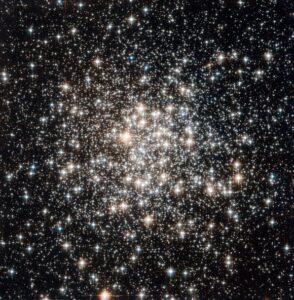 Starry Starry Night – Globular Cluster Messier 107
Starry Starry Night – Globular Cluster Messier 107
The Hubble Space Telescope captured a crowd of stars that looks rather like a stadium darkened before a show, lit only by the flashbulbs of the audience’s cameras. Yet the many stars of this object, known as Messier 107, are not a fleeting phenomenon, at least by human reckoning of time – these ancient stars have gleamed for many billions of years.
Messier 107 is one of more than 150 globular star clusters found around the disc of the Milky Way galaxy. These spherical collections each contain hundreds of thousands of extremely old stars and are among the oldest objects in the Milky Way.
The origin of globular clusters and their impact on galactic evolution remains somewhat unclear, so astronomers continue to study them. Messier 107 can be found in the constellation of Ophiuchus (The Serpent Bearer) and is located about 20,000 light-years from our solar system. French astronomer Pierre Méchain first noted the object in 1782, and British astronomer William Herschel documented it independently a year later. A Canadian astronomer, Helen Sawyer Hogg, added Messier 107 to Charles Messier’s famous astronomical catalogue in 1947. This picture was obtained with the Wide Field Camera of Hubble’s Advanced Camera for Surveys. Image credit: ESA/NASA
 The Phantom Galaxy
The Phantom Galaxy
Available in 300 x 600mm This image from the NASA/ESA/CSA James Webb Space Telescope shows the heart of M74, otherwise known as the Phantom Galaxy. Webb’s sharp vision has revealed delicate filaments of gas and dust in the grandiose spiral arms which wind outwards from the centre of this image. A lack of gas in the nuclear region also provides an unobscured view of the nuclear star cluster at the galaxy’s centre. M74 is a particular class of spiral galaxy known as a ‘grand design spiral’, meaning that its spiral arms are prominent and well-defined, unlike the patchy and ragged structure seen in some spiral galaxies.
The Phantom Galaxy is around 32 million light-years away from Earth in the constellation Pisces, and lies almost face-on to Earth. This, coupled with its well-defined spiral arms, makes it a favourite target for astronomers studying the origin and structure of galactic spirals.
Webb gazed into M74 with its Mid-InfraRed Instrument (MIRI) in order to learn more about the earliest phases of star formation in the local Universe. These observations are part of a larger effort to chart 19 nearby star-forming galaxies in the infrared by the international PHANGS collaboration. Those galaxies have already been observed using the NASA/ESA Hubble Space Telescope and ground-based observatories. The addition of crystal-clear Webb observations at longer wavelengths will allow astronomers to pinpoint star-forming regions in the galaxies, accurately measure the masses and ages of star clusters, and gain insights into the nature of the small grains of dust drifting in interstellar space.
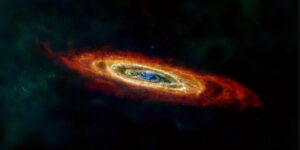 ANDROMEDA GALAXY
ANDROMEDA GALAXY
This image of the Andromeda galaxy, or M31, includes data from the ESA (European Space Agency) Herschel mission, supplemented with data from ESA’s retired Planck observatory and two retired NASA missions: the Infrared Astronomical Satellite (IRAS) and Cosmic Background Explorer (COBE).
Operated from 2009 to 2013, Herschel detected wavelengths of light in the far-infrared and microwave ranges, and was ideal for studying dust in nearby galaxies because it could capture small-scale structures in the dust clouds in high resolution. However, Herschel often couldn’t detect light from diffuse dust clouds – especially in the outer regions of galaxies, where the gas and dust become sparse and thus fainter. As a result, the mission missed up to 30% of all the light given off by dust. Combining the Herschel observations with data from other observatories creates a more complete picture of the dust in the galaxy. In the image, red indicates hydrogen gas; green indicates cold dust; and warmer dust is shown in blue. Launched in 1983, IRAS was the first space telescope to detect infrared light, setting the stage for future observatories like NASA’s Spitzer Space Telescope and James Webb Space Telescope. The Planck observatory, launched in 2009, and COBE, launched in 1989, both studied the cosmic microwave background, or light left over from the big bang.
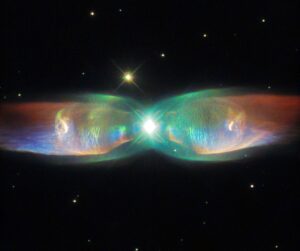 The Twin Jet Nebula
The Twin Jet Nebula
A planetary nebula lying some 4200 light-years away, viewed by the NASA/ESA Hubble Space Telescope. Planetary nebulae are formed when the outer layers of an aging low-mass star are ejected and interact with the surrounding interstellar medium, leaving behind a compact white dwarf. The shimmering colours visible in this NASA/ESA Hubble Space Telescope image show off the remarkable complexity of the Twin Jet Nebula. The new image highlights the nebula’s shells and its knots of expanding gas in striking detail. Two iridescent lobes of material stretch outwards from a central star system. Within these lobes two huge jets of gas are streaming from the star system at speeds in excess of one million kilometres per hour.
The glowing and expanding shells of gas clearly visible in this image represent the final stages of life for an old star of low to intermediate mass. The star has not only ejected its outer layers, but the exposed remnant core is now illuminating these layers – resulting in a spectacular light show like the one seen here.</>
However, the Twin Jet Nebula is not just any planetary nebula, it is a bipolar nebula. Ordinary planetary nebulae have one star at their centre, bipolar nebulae have two, in a binary star system. Astronomers have found that the two stars in this pair each have around the same mass as the Sun, ranging from 0.6 to 1.0 solar masses for the smaller star, and from 1.0 to 1.4 solar masses for its larger companion. The larger star is approaching the end of its days and has already ejected its outer layers of gas into space, whereas its partner is further evolved, and is a small white dwarf.

The characteristic shape of the wings of the Twin Jet Nebula is most likely caused by the motion of the two central stars around each other. It is believed that a white dwarf orbits its partner star and thus the ejected gas from the dying star is pulled into two lobes rather than expanding as a uniform sphere. However, astronomers are still debating whether all bipolar nebulae are created by binary stars. Meanwhile the nebula’s wings are still growing and, by measuring their expansion, astronomers have calculated that the nebula was created only 1200 years ago. Within the wings, starting from the star system and extending horizontally outwards like veins are two faint blue patches.
Although these may seem subtle in comparison to the nebula’s rainbow colours, these are actually violent twin jets streaming out into space, at speeds in excess of one million kilometres per hour. This is a phenomenon that is another consequence of the binary system at the heart of the nebula. These jets slowly change their orientation, precessing across the lobes as they are pulled by the wayward gravity of the binary system. The two stars at the heart of the nebula circle one another roughly every 100 years. This rotation not only creates the wings of the butterfly and the two jets, it also allows the white dwarf to strip gas from its larger companion, which then forms a large disc of material around the stars, extending out as far as 15 times the orbit of Pluto! Even though this disc is of incredible size, it is much too small to be seen on the image taken by Hubble.
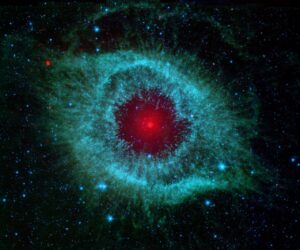 Helix Nebula
Helix Nebula
When a star like the Sun runs out of fuel, it expands and its outer layers puff off, and then the core of the star shrinks. This phase is known as a “planetary nebula,” and astronomers expect our Sun will experience this in about 5 billion years. This Helix Nebula images contains infrared data from NASA’s Spitzer Space Telescope (green and red), optical light from Hubble (orange and blue), ultraviolet from NASA’s Galaxy Evolution Explorer (cyan), and Chandra’s X-rays (appearing as white) showing the white dwarf star that formed in the center of the nebula. The image is about four light years across.
A dying star is throwing a cosmic tantrum in this combined image from NASA’s Spitzer Space Telescope and the Galaxy Evolution Explorer (GALEX), which NASA has lent to the California Institute of Technology in Pasadena. In death, the star’s dusty outer layers are unraveling into space, glowing from the intense ultraviolet radiation being pumped out by the hot stellar core. This object, called the Helix nebula, lies 650 light-years away, in the constellation of Aquarius. Also known by the catalog number NGC 7293, it is a typical example of a class of objects called planetary nebulae. Discovered in the 18th century, these cosmic works of art were erroneously named for their resemblance to gas-giant planets. Planetary nebulae are actually the remains of stars that once looked a lot like our sun. These stars spend most of their lives turning hydrogen into helium in massive runaway nuclear fusion reactions in their cores. In fact, this process of fusion provides all the light and heat that we get from our sun. Our sun will blossom into a planetary nebula when it dies in about five billion years. When the hydrogen fuel for the fusion reaction runs out, the star turns to helium for a fuel source, burning it into an even heavier mix of carbon, nitrogen and oxygen. Eventually, the helium will also be exhausted, and the star dies, puffing off its outer gaseous layers and leaving behind the tiny, hot, dense core, called a white dwarf. The white dwarf is about the size of Earth, but has a mass very close to that of the original star; in fact, a teaspoon of a white dwarf would weigh as much as a few elephants! The glow from planetary nebulae is particularly intriguing as it appears surprisingly similar across a broad swath of the spectrum, from ultraviolet to infrared. The Helix remains recognizable at any of these wavelengths, but the combination shown here highlights some subtle differences. The intense ultraviolet radiation from the white dwarf heats up the expelled layers of gas, which shine brightly in the infrared. GALEX has picked out the ultraviolet light pouring out of this system, shown throughout the nebula in blue, while Spitzer has snagged the detailed infrared signature of the dust and gas in yellow A portion of the extended field beyond the nebula, which was not observed by Spitzer, is from NASA’s all-sky Wide-field Infrared Survey Explorer (WISE). The white dwarf star itself is a tiny white pinprick right at the center of the nebula. The brighter purple circle in the very center is the combined ultraviolet and infrared glow of a dusty disk circling the white dwarf (the disk itself is too small to be resolved). This dust was most likely kicked up by comets that survived the death of their star. Before the star died, its comets, and possibly planets, would have orbited the star in an orderly fashion. When the star ran out of hydrogen to burn, and blew off its outer layers, the icy bodies and outer planets would have been tossed about and into each other, kicking up an ongoing cosmic dust storm. Any inner planets in the system would have burned up or been swallowed as their dying star expanded. Infrared data from Spitzer for the central nebula is rendered in green (wavelengths of 3.6 to 4.5 microns) and red (8 to 24 microns), with WISE data covering the outer areas in green (3.4 to 4.5 microns) and red (12 to 22 microns). Ultraviolet data from GALEX appears as blue (0.15 to 2.3 microns).Image Credit: NASA/JPL-Caltech
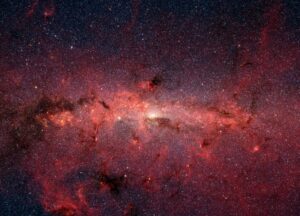 Galaxy Central Revealing the Milky Way’s Centre
Galaxy Central Revealing the Milky Way’s Centre
The center of our Milky Way galaxy is hidden from the prying eyes of optical telescopes by clouds of obscuring dust and gas. But in this stunning vista, the Spitzer Space Telescope’s infrared cameras penetrate much of the dust, revealing the stars of the crowded galactic center region. The upcoming James Webb Space Telescope will offer a much-improved infrared view, teasing out fainter stars and sharper details.
The center of our galaxy is a crowded place: A black hole weighing 4 million times as much as our Sun is surrounded by millions of stars whipping around it at breakneck speeds. This extreme environment is bathed in intense ultraviolet light and X-ray radiation. Yet much of this activity is hidden from our view, obscured by vast swaths of interstellar dust. NASA’s James Webb Space Telescope is designed to view the universe in infrared light, which is invisible to the human eye, but is very important for looking at astronomical objects hidden by dust. After its launch, Webb will gather infrared light that has penetrated the dusty veil, revealing the galactic center in unprecedented detail. Image Credit: NASA, JPL-Caltech, Susan Stolovy (SSC/Caltech) et al.
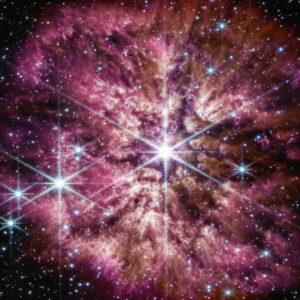 Wolf Rayet Dying Star
Wolf Rayet Dying Star
JWT A rarely seen prelude to a Supernova The rare sight of a Wolf-Rayet star – among the most luminous, most massive, and most briefly detectable stars known – was one of the first observations made by NASA’s James Webb Space Telescope in June 2022. The rare sight of a Wolf-Rayet star – among the most luminous, most massive, and most briefly detectable stars known – was one of the first observations made by NASA’s James Webb Space Telescope in June 2022. Webb shows the star, WR 124, in unprecedented detail with its powerful infrared instruments. The star is 15,000 light-years away in the constellation Sagitta.
Massive stars race through their lifecycles, and only some of them go through a brief Wolf-Rayet phase before going supernova, making Webb’s detailed observations of this rare phase valuable to astronomers. Wolf-Rayet stars are in the process of casting off their outer layers, resulting in their characteristic halos of gas and dust. The star WR 124 is 30 times the mass of the Sun and has shed 10 Suns’ worth of material – so far. As the ejected gas moves away from the star and cools, cosmic dust forms and glows in the infrared light detectable by Webb. The origin of cosmic dust that can survive a supernova blast and contribute to the universe’s overall “dust budget” is of great interest to astronomers for multiple reasons. Dust is integral to the workings of the universe: It shelters forming stars, gathers together to help form planets, and serves as a platform for molecules to form and clump together – including the building blocks of life on Earth. Despite the many essential roles that dust plays, there is still more dust in the universe than astronomers’ current dust-formation theories can explain. The universe is operating with a dust budget surplus. The telescope’s Mid-Infrared Instrument (MIRI) reveals the clumpy structure of the gas and dust nebula of the ejected material now surrounding the star. Before Webb, dust-loving astronomers simply did not have enough detailed information to explore questions of dust production in environments like WR 124, and whether the dust grains were large and bountiful enough to survive the supernova and become a significant contribution to the overall dust budget. Now those questions can be investigated with real data. Stars like WR 124 also serve as an analog to help astronomers understand a crucial period in the early history of the universe. Similar dying stars first seeded the young universe with heavy elements forged in their cores – elements that are now common in the current era, including on Earth. Webb’s detailed image of WR 124 preserves forever a brief, turbulent time of transformation, and promises future discoveries that will reveal the long-shrouded mysteries of cosmic dust.
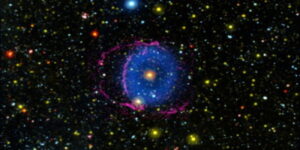 The Blue Ring Nebula
The Blue Ring Nebula
Available in 300 x 600mm The Blue Ring Nebula posed a 16 year old Cosmic Mystery, now solved, revealing stellar missing link. The Blue Ring Nebula which perplexed scientists for over a decade appears to be the youngest known example of two stars merging into one.
The Blue Ring Nebula consists of two expanding cones of gas ejected into space by a stellar merger. As the gas cools, it forms hydrogen molecules that collide with particles in interstellar space, causing them to radiate far-ultraviolet light. Invisible to the human eye, it is shown here as blue. Credits: NASA/JPL-Caltech/M. Seibert (Carnegie Institution for Science)/K. Hoadley (Caltech)/GALEX Team In 2004, scientists with NASA’s space-based Galaxy Evolution Explorer (GALEX) spotted an object unlike any they’d seen before in our Milky Way galaxy: a large, faint blob of gas with a star at its center. In the GALEX images, the blob appeared blue – though it doesn’t actually emit light visible to the human eye – and subsequent observations revealed a thick ring structure within it. So the team nicknamed it the Blue Ring Nebula. Over the next 16 years, they studied it with multiple Earth- and space-based telescopes, but the more they learned, the more mysterious it seemed. A new study published online on Nov. 18 in the journal Nature may have cracked the case. By applying cutting-edge theoretical models to the slew of data that has been collected on this object, the authors posit the nebula – a cloud of gas in space – is likely composed of debris from two stars that collided and merged into a single star. 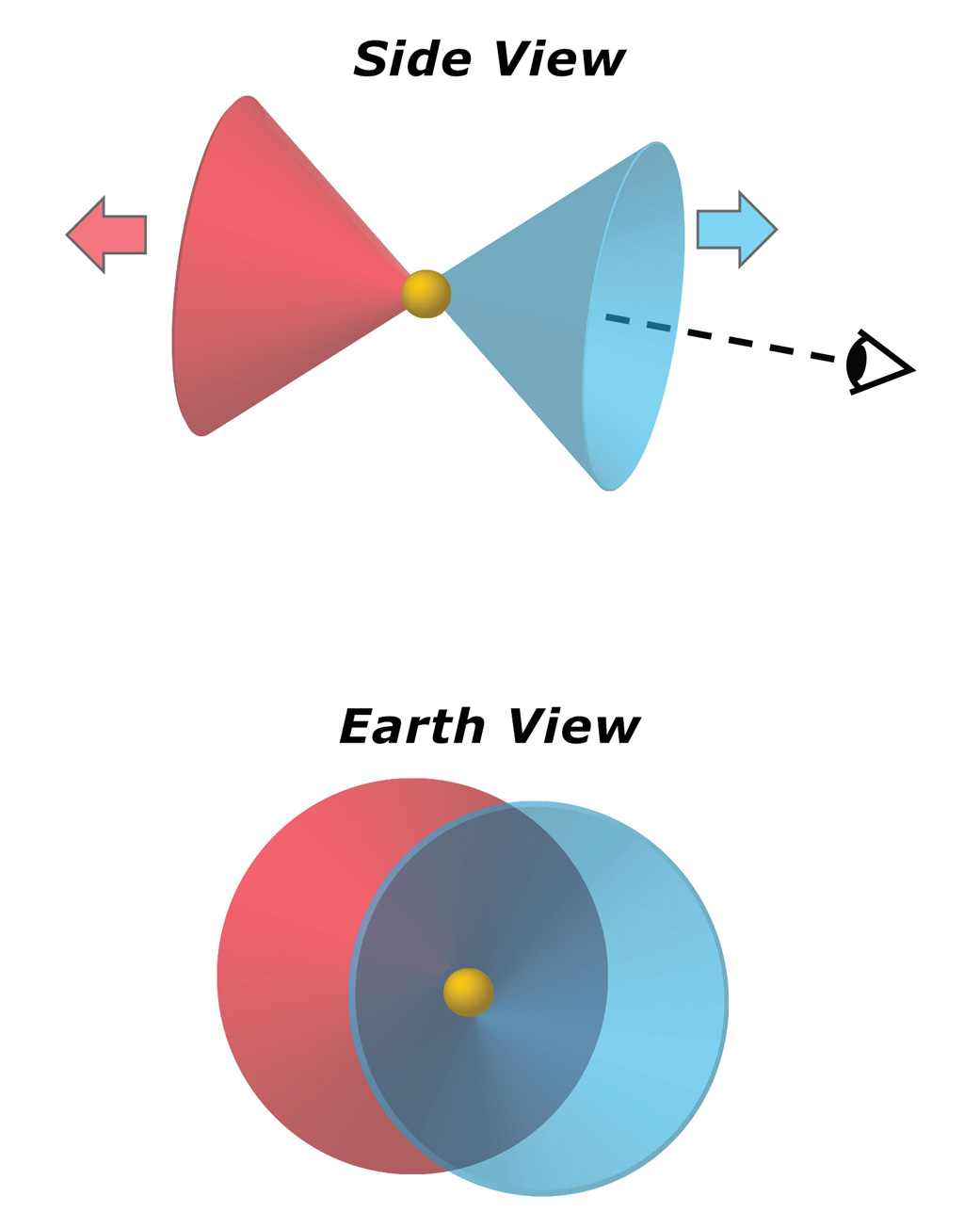
The Blue Ring Nebula consists of two hollow, cone-shaped clouds of debris moving in opposite directions away from the central star. The base of one cone is traveling almost directly toward Earth. As a result, astronomers looking at the nebula see two circles that partially overlap. Credits: Mark Seibert
While merged star systems are thought to be fairly common, they are nearly impossible to study immediately after they form because they’re obscured by debris the collision kicks up. Once the debris has cleared – at least hundreds of thousands of years later – they’re challenging to identify because they resemble non-merged stars. The Blue Ring Nebula appears to be the missing link: Astronomers are seeing the star system only a few thousand years after the merger, when evidence of the union is still plentiful. It appears to be the first known example of a merged star system at this stage. Operated between 2003 and 2013 and managed by NASA’s Jet Propulsion Laboratory in Southern California, GALEX was designed to help study the history of star formation throughout most of the universe by taking a census of young star populations in other galaxies. To do this, the mission observed both near-UV light (wavelengths slightly shorter than visible light) and far-UV. Most objects seen by GALEX radiated both near-UV (represented as yellow in GALEX images) and far-UV (represented as blue), but the Blue Ring Nebula stood out because it emitted only far-UV light. The object’s size was similar to that of a supernova remnant, which forms when a massive star runs out of fuel and explodes, or a planetary nebula, the puffed-up remains of a star the size of our Sun. But the Blue Ring Nebula had a living star at its center. What’s more, supernova remnants and planetary nebulas radiate in multiple light wavelengths outside the UV range, while further research showed that the Blue Ring Nebula did not.
Phantom Planet
In 2006, the GALEX team looked at the nebula with the 200-inch (5.1-meter) Hale telescope at the Palomar Observatory in San Diego County, California, and then with the even more powerful 10-meter (33-foot) telescopes at the W.M. Keck Observatory in Hawaii. They found evidence of a shockwave in the nebula, suggesting the gas composing the Blue Ring Nebula had indeed been expelled by some kind of violent event around the central star. Keck data also suggested the star was pulling a large amount of material onto its surface. But where was the material coming from? “For quite a long time we thought that maybe there was a planet several times the mass of Jupiter being torn apart by the star, and that was throwing all that gas out of the system,” said Mark Seibert, an astrophysicist with the Carnegie Institution for Science and a member of the GALEX team at Caltech, which manages JPL. But the team wanted more data. In 2012, using the first full-sky survey from NASA’s Wide-field Infrared Survey Explorer (WISE), a space telescope that studied the sky in infrared light, the GALEX team identified a disk of dust orbiting closely around the star. (WISE was reactivated in 2013 as the asteroid-hunting NEOWISE mission.) Archival data from three other infrared observatories, including NASA’s Spitzer Space Telescope, also spotted the disk. The finding didn’t rule out the possibility that a planet was also orbiting the star, but eventually the team would show that the disk and the material expelled into space came from something larger than even a giant planet. Then in 2017, the Habitable Zone Planet Finder on the Hobby-Eberly Telescope in Texas confirmed there was no compact object orbiting the star. More than a decade after discovering the Blue Ring Nebula, the team had gathered data on the system from four space telescopes, four ground-based telescopes, historical observations of the star going back to 1895 (in order to look for changes in its brightness over time), and with the help of citizen scientists through the American Association of Variable Star Observers (AAVSO). But an explanation for what had created the nebula still eluded them.
The Blue Ring Nebula is thought to be the product of two stars merging into one. The collision of the bodies ejected a cloud of hot debris into space. A disk of gas orbiting the larger star cut the cloud in half, creating two cones that are moving away from the star in opposite directions
Stellar Sleuthing
By the time Keri Hoadley began working with the GALEX science team in 2017, “the group had kind of hit a wall” with the Blue Ring Nebula, she said. But Hoadley, an astrophysicist at Caltech, was fascinated by the object and its bizarre features, so she accepted the challenge of trying to solve the mystery. It seemed likely that the solution would not come from more observations of the system, but from cutting-edge theories that could make sense of the existing data. So Chris Martin, principal investigator for GALEX at Caltech, reached out to Brian Metzger of Columbia University for help. As a theoretical astrophysicist, Metzger makes mathematical and computational models of cosmic phenomena, which can be used to predict how those phenomena will look and behave. He specializes in cosmic mergers – collisions between a variety of objects, whether they be planets and stars or two black holes. With Metzger on board and Hoadley shepherding the work, things progressed quickly. “It wasn’t just that Brian could explain the data we were seeing; he was essentially predicting what we had observed before he saw it,” said Hoadley. “He’d say, ‘If this is a stellar merger, then you should see X,’ and it was like, ‘Yes! We see that!’” The team concluded that the nebula was the product of a relatively fresh stellar merger that likely occurred between a star similar to our Sun and another star only about one-tenth that size (or about 100 times the mass of Jupiter). Nearing the end of its life, the Sun-like star began to swell, creeping closer to its companion. Eventually, the smaller star fell into a downward spiral toward its larger companion. Along the way, the larger star tore the smaller star apart, wrapping itself in a ring of debris before swallowing the smaller star entirely. This was the violent event that led to the formation of the Blue Ring Nebula. The merger launched a cloud of hot debris into space that was sliced in two by the gas disk. This created two cone-shaped debris clouds, their bases moving away from the star in opposite directions and getting wider as they travel outward. The base of one cone is coming almost directly toward Earth and the other almost directly away. They are too faint to see alone, but the area where the cones overlap (as seen from Earth) forms the central blue ring GALEX observed. Millennia passed. The expanding debris cloud cooled and formed molecules and dust, including hydrogen molecules that collided with the interstellar medium, the sparse collection of atoms and energetic particles that fill the space between stars. The collisions excited the hydrogen molecules, causing them to radiate in a specific wavelength of far-UV light. Over time, the glow became just bright enough for GALEX to see. Stellar mergers may occur as often as once every 10 years in our Milky Way galaxy, meaning it’s possible that a sizeable population of the stars we see in the sky were once two. “We see plenty of two-star systems that might merge some day, and we think we’ve identified stars that merged maybe millions of years ago. But we have almost no data on what happens in between,” said Metzger. “We think there are probably plenty of young remnants of stellar mergers in our galaxy, and the Blue Ring Nebula might show us what they look like so we can identify more of them.” Though this is likely the conclusion of a 16-year-old mystery, it may also be the beginning of a new chapter in the study of stellar mergers. “It’s amazing that GALEX was able to find this really faint object that we weren’t looking for but that turns out to be something really interesting to astronomers,” said Seibert. “It just reiterates that when you look at the universe in a new wavelength or in a new way, you find things you never imagined you would.” JPL, a division of Caltech, managed the GALEX mission for NASA’s Science Mission Directorate. The mission was developed by NASA’s Goddard Space Flight Center in Greenbelt, Maryland, under the Explorers Program. JPL also managed the Spitzer and WISE missions, and manages the NEOWISE mission. For more information about the GALEX mission visit: http://www.galex.caltech.edu/index.html https://www.jpl.nasa.gov/missions/galaxy-evolution-explorer-galex/ Calla Cofield Jet Propulsion Laboratory, Pasadena, Calif. 626-808-2469 calla.e.cofield@jpl.nasa.gov 2020-222
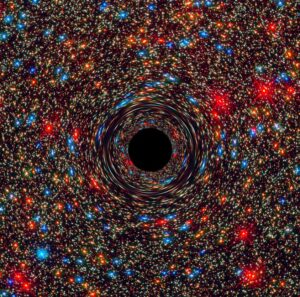 Behemoth Black Hole
Behemoth Black Hole
Astronomers have uncovered a near-record breaking supermassive black hole, weighing 17 billion suns, in an unlikely place: in the center of a galaxy in a sparsely populated area of the universe. The observations, made by NASA’s Hubble Space Telescope and the Gemini Telescope in Hawaii, may indicate that these monster objects may be more common than once thought.
Until now, the biggest supermassive black holes – those roughly 10 billion times the mass of our sun – have been found at the cores of very large galaxies in regions of the universe packed with other large galaxies. In fact, the current record holder tips the scale at 21 billion suns and resides in the crowded Coma galaxy cluster that consists of over 1,000 galaxies.
“The newly discovered supersized black hole resides in the center of a massive elliptical galaxy, NGC 1600, located in a cosmic backwater, a small grouping of 20 or so galaxies,” said lead discoverer Chung-Pei Ma, a University of California-Berkeley astronomer and head of the MASSIVE Survey, a study of the most massive galaxies and supermassive black holes in the local universe. While finding a gigantic black hole in a massive galaxy in a crowded area of the universe is to be expected – like running across a skyscraper in Manhattan – it seemed less likely they could be found in the universe’s small towns.
“There are quite a few galaxies the size of NGC 1600 that reside in average-size galaxy groups,” Ma said. “We estimate that these smaller groups are about 50 times more abundant than spectacular galaxy clusters like the Coma cluster. So the question now is, ‘Is this the tip of an iceberg?’ Maybe there are more monster black holes out there that don’t live in a skyscraper in Manhattan, but in a tall building somewhere in the Midwestern plains.”
The researchers also were surprised to discover that the black hole is 10 times more massive than they had predicted for a galaxy of this mass. Based on previous Hubble surveys of black holes, astronomers had developed a correlation between a black hole’s mass and the mass of its host galaxy’s central bulge of stars – the larger the galaxy bulge, the proportionally more massive the black hole. But for galaxy NGC 1600, the giant black hole’s mass far overshadows the mass of its relatively sparse bulge. “It appears that that relation does not work very well with extremely massive black holes; they are a larger fraction of the host galaxy’s mass,” Ma said. Ma and her colleagues are reporting the discovery of the black hole, which is located about 200 million light years from Earth in the direction of the constellation Eridanus, in the April 6 issue of the journal Nature. Jens Thomas of the Max Planck-Institute for Extraterrestrial Physics, Garching, Germany is the paper’s lead author.
One idea to explain the black hole’s monster size is that it merged with another black hole long ago when galaxy interactions were more frequent. When two galaxies merge, their central black holes settle into the core of the new galaxy and orbit each other. Stars falling near the binary black hole, depending on their speed and trajectory, can actually rob momentum from the whirling pair and pick up enough velocity to escape from the galaxy’s core. This gravitational interaction causes the black holes to slowly move closer together, eventually merging to form an even larger black hole. The supermassive black hole then continues to grow by gobbling up gas funneled to the core by galaxy collisions. “To become this massive, the black hole would have had a very voracious phase during which it devoured lots of gas,” Ma said.
The frequent meals consumed by NGC 1600 may also be the reason why the galaxy resides in a small town, with few galactic neighbors. NGC 1600 is the most dominant galaxy in its galactic group, at least three times brighter than its neighbors. “Other groups like this rarely have such a large luminosity gap between the brightest and the second brightest galaxies,” Ma said. Most of the galaxy’s gas was consumed long ago when the black hole blazed as a brilliant quasar from material streaming into it that was heated into a glowing plasma. “Now, the black hole is a sleeping giant,” Ma said. “The only way we found it was by measuring the velocities of stars near it, which are strongly influenced by the gravity of the black hole. The velocity measurements give us an estimate of the black hole’s mass.” <p”>The velocity measurements were made by the Gemini Multi-Object Spectrograph (GMOS) on the Gemini North 8-meter telescope on Mauna Kea in Hawaii. GMOS spectroscopically dissected the light from the galaxy’s center, revealing stars within 3,000 light-years of the core. Some of these stars are circling around the black hole and avoiding close encounters. However, stars moving on a straighter path away from the core suggest that they had ventured closer to the center and had been slung away, most likely by the twin black holes.Archival Hubble images, taken by the Near Infrared Camera and Multi-Object Spectrometer (NICMOS), supports the idea of twin black holes pushing stars away. The NICMOS images revealed that the galaxy’s core was unusually faint, indicating a lack of stars close to the galactic center. A star-depleted core distinguishes massive galaxies from standard elliptical galaxies, which are much brighter in their centers. Ma and her colleagues estimated that the amount of stars tossed out of the central region equals 40 billion suns, comparable to ejecting the entire disk of our Milky Way galaxy. For more information, visit: http://www.nasa.gov/hubble http://hubblesite.org/newscenter/archive/releases/2016/12/
